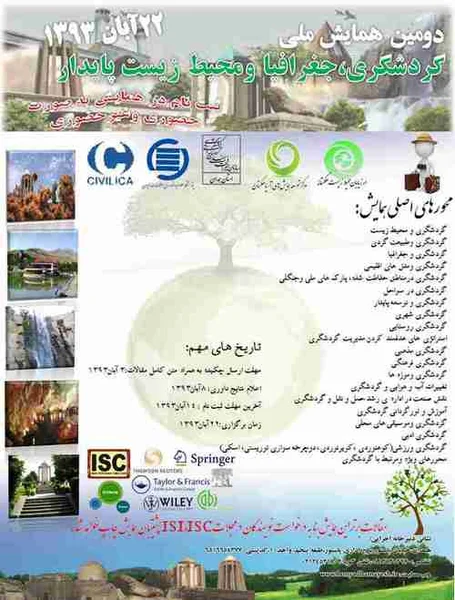-
the place of edessa in the development of syrian christianity
جزئیات بیشتر مقاله- تاریخ ارائه: 1393/08/01
- تاریخ انتشار در تی پی بین: 1393/08/01
- تعداد بازدید: 313
- تعداد پرسش و پاسخ ها: 0
- شماره تماس دبیرخانه رویداد: -
syrian christianity flourished in three ancient cultural centres, edessa in the east of upper euphrates, ediabene in the east of upper tigris, and seleucia-ctesiphon on the lower tigris. these centres adopted aramaic as the main language during the neo-assyrian period, and by the fifth century b.c., this language became the lingua franca of the entire near east. aramaic culture, heavily influenced by the ancient cultures of assyria and babylonia, marked these regions before they fell under the cultural hegemony of the greeks, especially in the case of edessa. nevertheless, when the kingdom of edessa ,abgar, officially adopted christianity by the third century, its own aramaic dialect, syriac, became the language of the christians in both syria and mesopotamia. by sifting through sources remarking on abgar, especially the doctrine of addai, we learn about the earliest history of syrian christianity and religious syncretism with earlier paganism. furthermore the place of edessa (urhai) as a semi-autonomous city-state and as an ethnic crossroads plays an important role to this end as well, as it accommodates christian development, in spite of persecution from the governments of iran and rome and the religious leaders, christianity church flourished during this time in asia up to the late middle age, this was a historical research, in which data collected from written sources was analyzed using a descriptive-analytic approach.
مقالات جدیدترین رویدادها
-
استفاده از تحلیل اهمیت-عملکرد در ارائه الگوی مدیریت خلاقیت سازمانی و ارائه راهکار جهت بهبود
-
بررسی تاثیر ارزش وجوه نقد مازاد بر ساختار سرمایه شرکت های پذیرفته شده در بورس اوراق بهادار تهران
-
بررسی تأثیر سطح افشای ریسک بر قرارداد بدهی شرکت های پذیرفته شده در بورس اوراق بهادار تهران
-
بررسی تأثیر رتبه بندی اعتباری مبتنی بر مدل امتیاز بازار نوظهور بر نقد شوندگی سهام با تأکید بر خصوصی سازی شرکت ها
-
تأثیر آمیخته بازاریابی پوشاک ایرانی بر تصویر ذهنی مشتری پوشاک ایرانی (هاکوپیان)
-
مطالعه و بررسی نقاشی خط در هنر ایران از منظر هنر معتمد
-
بررسی میزان تاثیر نما و دیوارهای سبز بر منظر و زندگی شهری
-
شناسایی نقاط حادثه خیز راه های درون شهری کلان شهر شیراز
-
فاکتورهای توارثی تک ژنی بر اساس ژنتیک سلولی بالینی
-
تحلیل پدیدارشناسی معنای ذهنی و درک دانشجو معلمان از ویژگی ها و صلاحیت های دانشگاه آزاد اسلامی در مقطع کارشناسی ارشد بندرلنگه
مقالات جدیدترین ژورنال ها
-
مدیریت و بررسی افسردگی دانش آموزان دختر مقطع متوسطه دوم در دروان کرونا در شهرستان دزفول
-
مدیریت و بررسی خرد سیاسی در اندیشه ی فردوسی در ادب ایران
-
واکاوی و مدیریت توصیفی قلمدان(جاکلیدی)ضریح در موزه آستان قدس رضوی
-
بررسی تاثیر خلاقیت، دانش و انگیزه کارکنان بر پیشنهادات نوآورانه کارکنان ( مورد مطالعه: هتل های 3 و 4 ستاره استان کرمان)
-
بررسی تاثیر کیفیت سیستم های اطلاعاتی بر تصمیم گیری موفق در شرکتهای تولیدی استان اصفهان (مورد مطالعه: مدیران شرکتهای تولیدی استان اصفهان)
-
آسیب شناسی سیاستگذاری عمومی در حوزه توریسم روستایی مطالعه موردی استان لرستان
-
تبیین توسعه پایدار و عوامل موثر بر پایداری شهری ( نمونه موردی : شهرستان پردیس )
-
ارزیابی نفوذ پذیری توده سنگ های سازند آسماری در تکیه گاه های سد خرسان 2
-
تاثیر دوره تصدی مدیر عامل بر کوته بینی مدیران در شرکت های پذیرفته شده در بورس اوراق بهادار تهران
-
studying the effect of human force efficiency on stock return in firms enlisted in tehran stock exchange




سوال خود را در مورد این مقاله مطرح نمایید :